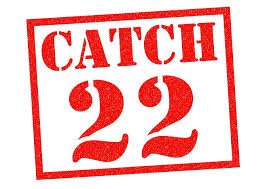
The Supreme Court last week issued notice on a special leave petition filed by the Competition Commission of India(CCI) against the Delhi High Court’s decision in Telefonaktiebolaget LM Ericsson (PUBL) v. Competition Commission of India and Anr. The main question before the SC is whether the provisions of Patent Act would prevail over the Competition Act in cases alleging anti competitive behaviour or abuse of dominant position.
Background
In that judgement, discussed by Praharsh here, the primary question was whether an agreement relating to protection of the rights of a patentee under the Patent Act can be looked into by the CCI for anti-competitive practices by the patentee or not. The question eventually turned to determining whether the Patents Act was a complete code in matters relating to use of patent and anti-competitive relating thereto. If yes, the Controller would have exclusive jurisdiction on the issue. If not, the issue will be decided by the CCI.
When the matter was placed before the Division Bench in an appeal from 2 single judge orders(Ericsson v. CCI and Monsanto v. CCI), Ericsson and Monsanto argued that issues pertaining to anti-competitive behaviour or abuse of dominance by patentees can be inquired into only by the “Controller or Civil Court under the provisions of section 84(7) (c)(provides for situations where reasonable requirements of the public are deemed to not have been satisfied) read with section 140(1)(iii)(c)(rights of purchaser, lessee or licensee to use process other than patented process) of the Patents Act”. Moreover, “allegations of anti-competitive practice by the patent holder are to be determined under section 84(6)(factors to be taken into account before granting compulsory license) and section 90(1)(ix)(licensee permitted to export patented product if license is granted to remedy anti-competitive practice determined by Controller) of the Patents Act”. Therefore, it was argued, since the field of anti-competitive practice by patentees has been occupied by Patent Act, CCI will not have any overlapping jurisdiction on the issue.
CCI, on the other hand, argued that the jurisdiction of CCI will be triggered if any person is affected by anti-competitive and abusive behaviour of a patentee. Further, the mechanism under the Patents Act are insufficient to enable the Controller to effectively inquire into allegations of anti-competitive or abusive behaviour of patentees. Therefore, CCI argued, that Patent Act was not a complete code in this regard. Also, relying on Ericsson v. CCI and Monsanto v. CCI, it argued that CCI can inquire whether the licensing agreement is reasonable or not under sec. 3(5)(i) of the Competition Act. (sec. 3(5)(i) provides that notwithstanding other provisions of Competition Act, the right of a patentee to protect their right under the patent act by imposing ‘reasonable’ conditions will not be impaired.)
Competition Act v. Patent Act
In the above case scenario, the question of conflict between two statutes i.e. The Competition Act, 2002 and the Patent Act, 1970 arose. In Ericsson v. CCI, the court held that although Patent Act is a self-contained code, the jurisdiction of CCI is not ousted in matters relating to the Patent. (Para 184) In Monsanto v. CCI, the court in Para 48 & 49, relying on language of 3(5)(i), conclude that the exclusionary provision to restrain infringement does not include a right to include unreasonable conditions that far exceed those that are necessary to protect the patentee’s rights. On the other hand, CCI can examine “whether an agreement is limited to restraining infringement of patents and includes reasonable conditions that may be necessary to protect such rights granted to a patentee. In Telefonaktiebolaget LM Ericsson (PUBL) v. Competition Commission of India and Anr, however, onwards Para 48, the division bench adopted a different line of reasoning. Although just like the 2016 Ericsson order, the Division Bench holds that Patent Act is a special legislation which will override the Competition Act in the event of repugnancy, it diverges from the above by holding that there is ‘implicit repugnancy’ between the two legislations. It is noteworthy that the earlier two judgements did not find any repugnancy between the two enactments. As Praharsh notes, the Division Bench held there is an overlap between the two legislations. On one hand, it held that in terms of anti-competitive agreements and abuse of dominant position, the Competition Act is the general legislation. On the other, the Patent Act is a special statute with regard to anti-competitive agreements and abuse of dominant position by a patentee in the exercise of their rights under the Patents Act.(here)
What Next?
Praharsh notes that since proceedings before the CCI are often lengthy, prompting parties to settle the dispute, the order of the Division Bench may bring relief for patentees. However, an important question is whether the Controller is equipped and competent to decide questions of anticompetitive agreements and the abuse of dominant positions. The Division Bench order was premised on the finding that the “inquiry that the CCI proposes to conduct in respect of an assertion of patent rights is nearly identical to that which the Controller will conduct under Chapter XVI of the Patents Act”.(Para 49) However, as Praharsh points out, that “disputes before the CCI on patent matters are not merely about the subject patent(s) but are about maintaining fair competition in the market, which thus requires the CCI to consider a plethora of other factors while issuing its finding/ recommendation”. It will be interesting to see as to how the SC reconciles the divergent viewpoints, including the above, raised in this case.
- SEO Powered Content & PR Distribution. Get Amplified Today.
- PlatoData.Network Vertical Generative Ai. Empower Yourself. Access Here.
- PlatoAiStream. Web3 Intelligence. Knowledge Amplified. Access Here.
- PlatoESG. Carbon, CleanTech, Energy, Environment, Solar, Waste Management. Access Here.
- PlatoHealth. Biotech and Clinical Trials Intelligence. Access Here.
- Source: https://spicyip.com/2024/03/the-competition-act-v-the-patent-act-catch-22.html



